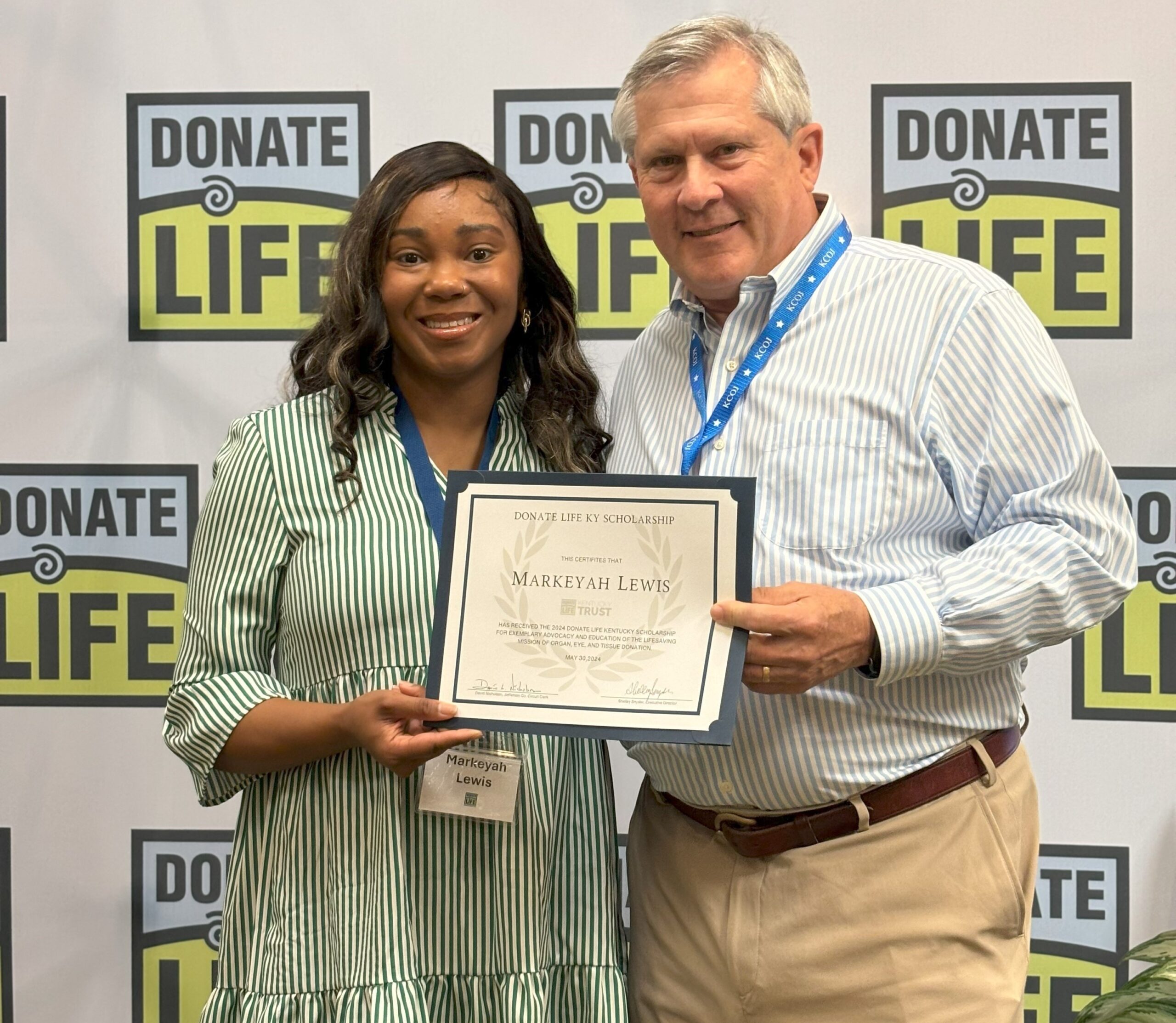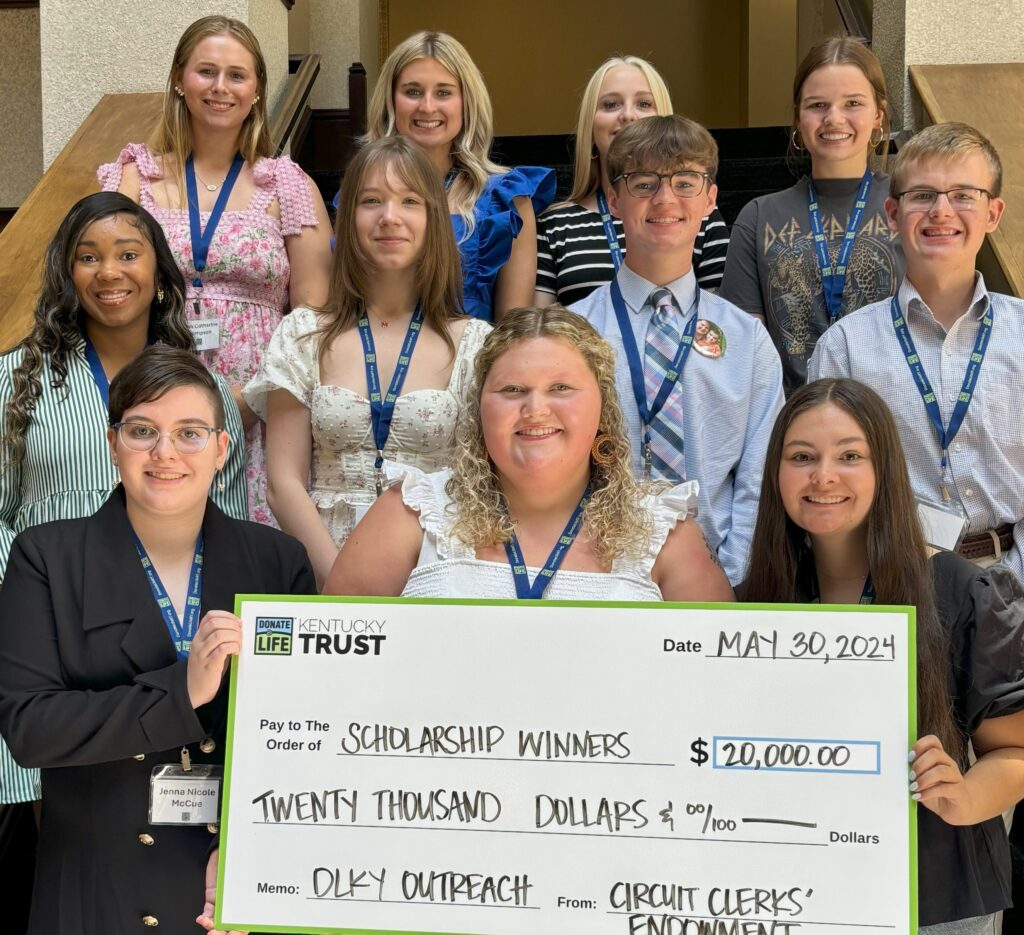What We Do
Community Outreach

Helping those who wait
Through community outreach, we engage communities to teach the truth about this lifesaving mission and inspire others to register as organ, eye and tissue donors to give hope and life to patients in need.
By the numbers
savings for tax-payers when someone is transplanted and no longer on dialysis
in scholarships awarded to Donate Life Kentucky student advocates in 2024
hours of volunteer time across Kentucky educating about the mission
new registered donors in Kentucky in 2024

Donate Life Kentucky Scholarships
We launched the Donate Life Kentucky Scholarship Program to support student and community advocates who educate about the mission of organ, eye, and tissue donation to their peers. This program provides the opportunity to earn scholarship dollars towards advancing their education. Scholarships are made possible by the Circuit Clerks Trust Endowment, named for our founders the Kentucky Circuit Court Clerks. Learn more about our Scholarship Program or email us Scholarships@donatelifeky.org. To receive updates when the 2025-2026 Application becomes available, click here:
Invest in Kentucky Families Today
We accept charitable contributions to provide vital services for children on the waiting list, donor families, transplant patients, and educational initiatives.
Share Hope
The need for donation is greater than the number of organs available — and every day more people are added to the national waiting list.
FAQs
Everyone can register to be an organ, eye and tissue donor – regardless of age or medical history. People under the age of 18 can register their intent to be organ, eye and tissue donors. However, until they are 18 years old, a parent or legal guardian makes the final donation decision. You are encouraged to share your decision with family/next of kin. Learn more here.
- In 2023, the Trust created a Circuit Clerks’ Trust Endowment to honor our founders. Now, our Donate Life Kentucky Scholarship Program allows student advocates who promote the mission of organ, eye, and tissue donation to earn scholarship dollars towards advancing their education.
- Click to apply for the 2024-2025 Scholarship or learn more by emailing BKaelin@donatelifeky.org.
- Reach out to Stephanie Grooms to buy Donate Life Kentucky Trust t-shirts and gear!
- Donate Life is the national brand for the cause of organ, tissue, and eye donation in America. To get the complete brand guidelines, please reach out to Stephanie Grooms.
- We believe that media has a role as one of the most visible, trusted sources of donation information in the country.
- As your partner, we are here to provide interviews, statistics, key messages and information to help you tell the stories of organ, eye and tissue donation accurately and completely.
- Email our Executive Director, Shelley Snyder or call 1-866-945-5433.
For additional national media questions, visit Donate Life America’s Media Resources.
- Teachers are incredibly impactful sources of donation information for students prior to obtaining a license and making vital donation decisions.
- As your partner, we are here to connect you with in-person speakers, videos, statistics, key messages and information to help you tell the stories of organ, eye and tissue donation accurately and completely.
- Email info@donatelifeky.org or call 1-866-945-5433 to learn more!
- Want to start an Organ Donation club at your high school or college? Visit our partner’s page at Student Organ Donation Advocates!
- If you wish to share your story with our community and partners, please visit our Stories Page to have your testimony uploaded to our website!
Community outreach is at the apex of all that we do to save lives here in Kentucky. If you would like to participate in outreach initiatives in your town, sign up as an Ambassador or reach out to Stephanie Grooms to learn more ways to help.
Outreach ideas include (but are not limited to):
- Church outreach
- Local business outreach
- Social media
- 3rd party fundraising
- Flag raisings
- Local media interview opportunities
- Proclamations
- Education campaigns